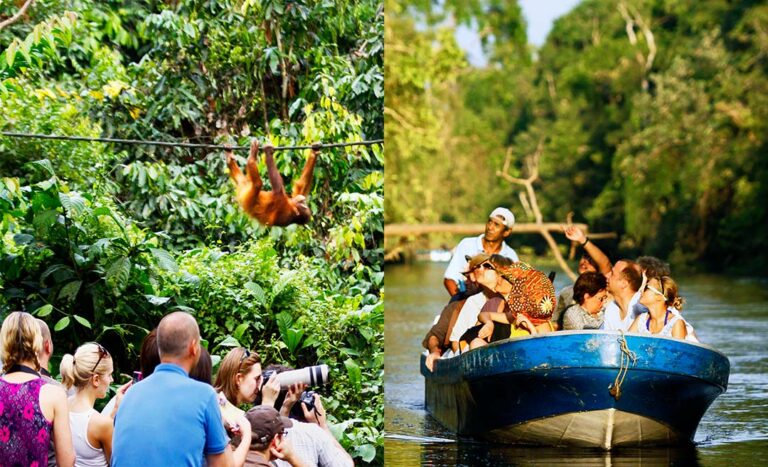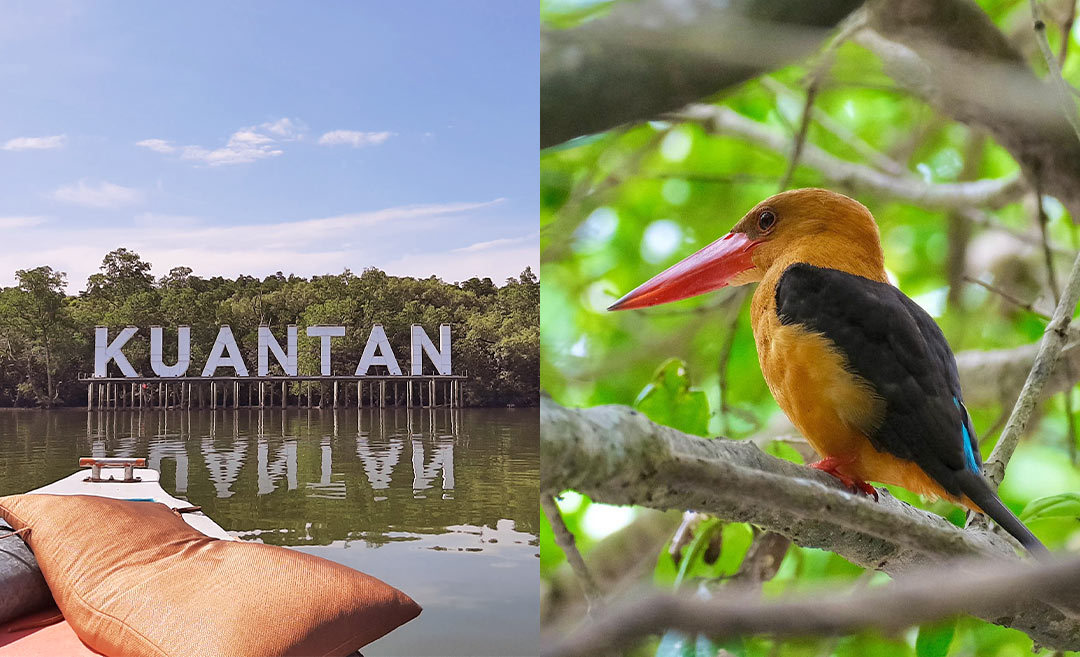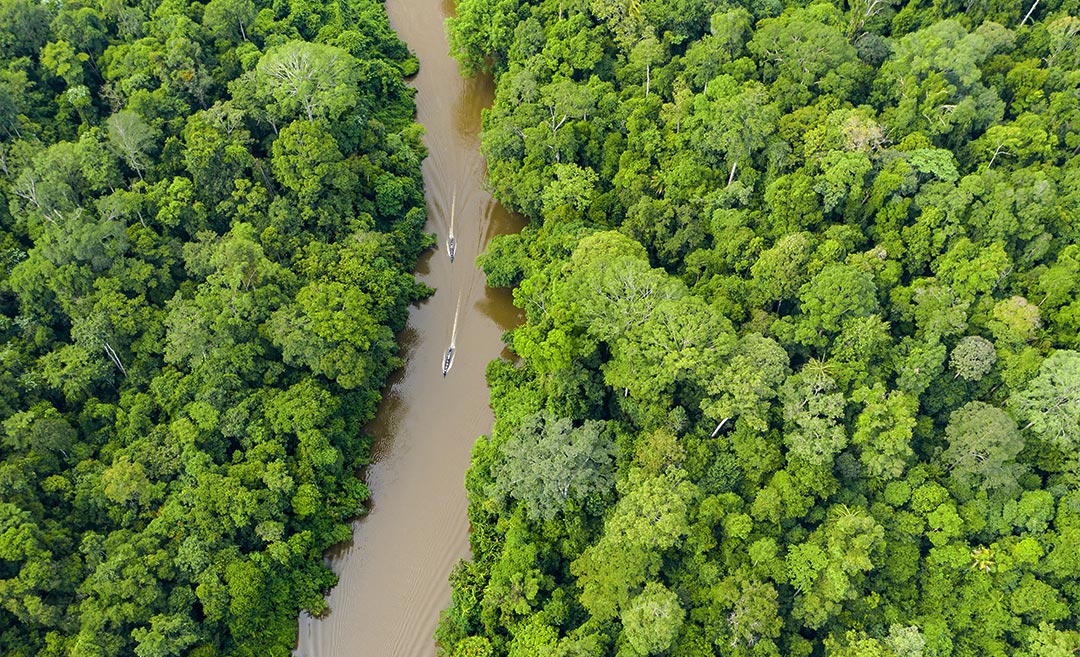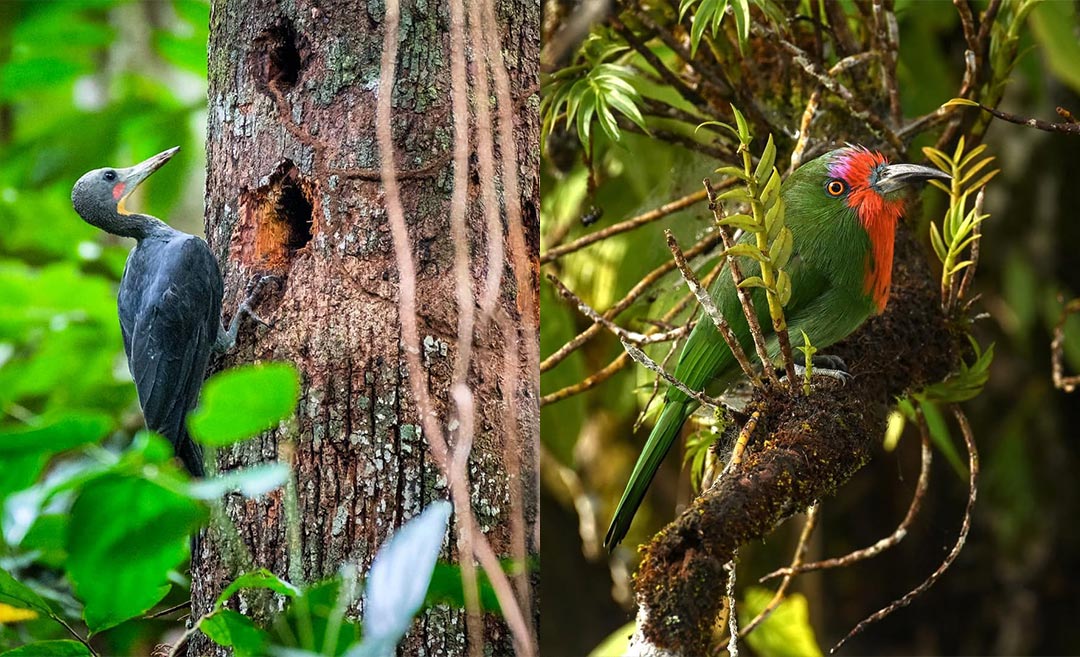Malaysia is a fantastic destination for wildlife enthusiasts, offering a rich variety of species both on land and in the sea. The country’s diverse ecosystems, from lush rainforests to kaleidoscopic coral reefs, provide numerous opportunities to admire animals. While March 3 is World Wildlife Day, every day is wild in Malaysia.
While zoos may be the easiest place to admire animals, there’s nothing like the excitement of spotting animals in their natural habitat. Wildlife spotting sites are plentiful, with the best being Turtle Island (Sabah), Earth Lodge at Ulu Muda (Kedah), Kenong Rimba, Taman Negara, the Langkawi wetlands, the Lower Kinabatangan River, Mulu National Park, Kinabalu National Park, and Bako National Park. Inquisitive visitors can seek out Malaysia’s unique carnivores, gibbons, macaques, primates, turtles, birds, reptiles, and more.
Here are some of the finest locations to visit to admire the best that Malaysia has to offer:
Borneo
Sarawak and Sabah on the island of Borneo are two of the best states to get close to wild animals. Orangutans only exist on the islands of Borneo and Sumatra (Indonesia), and the best that Malaysia has to offer is at Sepilok Orangutan Rehabilitation Centre in Sabah and Semenggoh Wildlife Centre in Sarawak. Both are rehabilitation centres for orphaned or displaced Orangutans, and it’s in both that visitors have the opportunity to see rangers helping these primates to be reintegrated back into the wilds of Borneo.

Nearby Sepilok, the Rainforest Discovery Centre, was established to educate visitors about the diverse tropical rainforest. One of the most exhilarating ways to do this is on the elevated skywalks, which enable visitors to peer into the canopy and admire birdlife such as the endemic Bornean Bristlehead or animals like the Giant Tree Squirrel.
Proboscis Monkeys are often sighted in Sarawak’s Bako National Park. Bako is famous for its diverse forest types and Proboscis Monkeys, known for their large, distinctive noses. The park also offers opportunities to see other wildlife like macaques, wild boars, and a wide range of birds.

Sabah’s Lower Kinabatangan River and its Menanggul River tributary near Sukau are a wildlife refuge brimming with animals such as Orangutans, macaques, wetland birds, and Proboscis Monkeys.

The Pygmy Bornean Elephant is a smaller subspecies of the Asian Elephant that lives in Borneo in destinations such as Danum Valley, the Lower Kinabatangan River, and Tabin Wildlife Reserve. Visitors to the Lower Kinabatangan can stay close to nature at eco-lodges such as Sukau Rainforest Lodge or seek out the guiding services offered by North Borneo Safari.

In other parts of Sabah, Danum Valley and the adjoining wilderness of Maliau Basin plus Kinabalu Park are biodiversity hotspots. Danum Valley Rainforest Lodge is a high-end retreat where specialised guides lead day and night adventures to admire the rainforest ecosystem.
At 4,095 m, Mount Kinabalu is Malaysia’s highest peak and home to four distinctive forest types. Some 326 bird species have been sighted here, with a few seen nowhere else in the world. Stay in Sutera Sanctuary Lodges and climb to the summit.
In Sarawak, Mulu is one of Malaysia’s most biodiverse parks, where elusive animals like the Clouded Leopard and Bornean Sun Bear live, along with other species, including birds, bats, and primates.
Malaysian waters, particularly those around Sarawak and Sabah, are home to four sea turtle species. The Sabah waters are part of the Coral Triangle, a global hotspot for marine biodiversity. Here, Sipadan Island is one of the world’s top dive sites. Meanwhile, islands like Sabah’s Turtle Islands and Sarawak’s Talang Satang National Parks support turtle hatcheries where visitors can join ranger-guided activities.

Ecotourists can visit both and stay overnight to work with rangers to locate egg-laying turtles and then release hatchlings.

Peninsular Malaysia
On the peninsula, there are several parks, reserves, and sanctuaries for wildlife spotting. These include Tenom Rimba, the Langkawi wetlands, Endau-Rompin National Park, Earth Lodge at Ulu Muda, Kuala Selangor Nature Park, the Seladang Centre in Pahang, and Taman Negara, Malaysia’s largest natural area.
Taman Negara supports the world’s oldest tropical rainforest, extending 4,343 km2 across Pahang, Kelantan, and Terengganu. Although sightings are rare, the critically endangered Malayan Tiger survives deep in its lowland forests. The park is also home to other carnivores like the Clouded Leopard, Black Panther, and Malayan Sun Bear. Visitors can stay nearby in the relative luxury of Mutiara Taman Negara Resort.

Taman Negara is also home to Asian Elephants, which are occasionally seen along riverbanks. Other noteworthy species include the White-handed Gibbon, which can be heard calling early in the morning.
Other nearby nature areas include Kenong Rimba Park near Kuala Lipis and the Seladang (Gaur or Wild Ox) Reservation Centre near Kuala Krau in Pahang. Not commonly known, the Seladang is the world’s largest cattle species and is symbolised on cans of Red Bull energy drinks. It’s an endangered species and is thought to be regionally extinct in Peninsular Malaysia.

Langkawi Archipelago
Langkawi, a collection of 99 islands, isn’t only known for its beauty but also for its abundant bird and marine life. Various hornbill species, like the Rhinoceros Hornbill, are often spotted soaring above the forest canopy of Gunung Raya. The cablecar SkyBridge on Gunung Machinchang is another popular birdwatching site.

Nearby, the Kilim Karst Geoforest Park is an excellent place to spot Brahminy Kites, White Bellied Sea Eagles, and other birds on a mangrove tour.

Wildlife spotting tips
- Remember, wild animals are wild and could attack, so forget the idea of a selfie.
- Wild animals often take flight, so move quietly through the forests.
- Most animals are protected, so leave them alone.
- Binoculars are helpful for locating wildlife, especially birds which are well camouflaged in the tropical rainforest.
- Use the services of experienced nature guides as they know where to sight animals.



